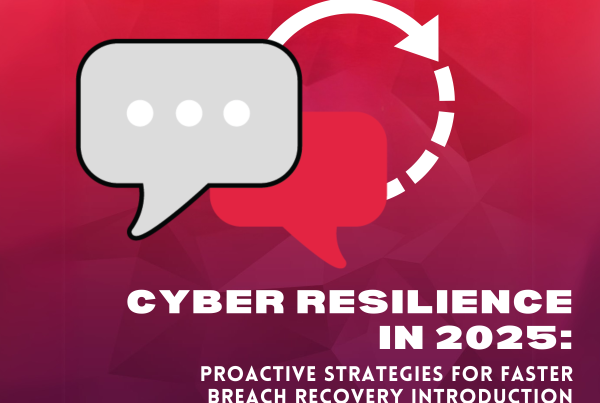In an increasingly interconnected world, businesses face numerous threats to their security. In particular, cyber extortion attacks have become a major concern in recent years. These malicious acts involve criminals exploiting vulnerabilities in digital systems to gain unauthorized access, allowing them to demand ransom in exchange for the release of valuable data or the prevention of a damaging cyberattack. This article explores the alarming rise of cyber extortion attacks and their profound impact on business security.
The Soaring Prevalence of Cyber Extortion Attacks
The digital landscape has become a fertile ground for cybercriminals seeking to extort businesses of all sizes. Over the past decade, the number of reported cyber extortion attacks has skyrocketed. This has left organizations vulnerable to financial losses, reputational damage, and operational disruption. High-profile incidents, such as the WannaCry and NotPetya attacks, have exposed the magnitude of this threat and highlighted the urgent need for robust cybersecurity measures.
What is Cyber Extortion?
Cyber extortion is a criminal act done in the digital space by malicious individuals who successfully exploit vulnerabilities in an organization’s system for their gain. They use various tactics like ransomware, DDoS attacks, and data theft to extort money or force some other response from their victims.
Ransomware attacks have become a popular and dangerous form of cybercrime. These attacks involve software that blocks access to a computer or network and demands ransom in exchange for releasing the data. It is important to be cautious and use security software to protect against such attacks. If infected, victims have three options: pay the ransom, remove the malware, or restart the device. Ransomware attacks can target both individuals and companies. Furthermore, there are two main types to be aware of: locker ransomware and crypto ransomware.
Locker ransomware blocks basic computer functions, denying access to the desktop while allowing interaction with the ransom demand window. Although this type of ransomware can be scary, it usually does not target critical files and rarely leads to data destruction. On the other hand, crypto ransomware encrypts important data, preventing access to files. This type of attack can cause panic as users see their files but cannot open them. Additionally, crypto ransomware often includes a countdown to increase pressure on victims to pay the ransom and recover their files.
The Extent of Ransomware Attacks
There have been several well-known examples of ransomware attacks that show the dangers they pose. Locky, WannaCry, Bad Rabbit, Ryuk, Shade/Troldesh, Jigsaw, CryptoLocker, Petya, GoldenEye, GandCrab, B0r0nt0k, Dharma Brrr ransomware, FAIR RANSOMWARE ransomware, and MADO ransomware are a few notable examples that have caused major damage and financial losses.
Ransomware attacks can affect different fields and industries, and their impact depends on the targeted data and the victim’s willingness to pay. While individual ransoms are usually in the range of $100 to $200, cybercriminals targeting corporations may demand much higher amounts if they know the data’s value to the organization. As a result, the financial gain for cybercriminals using ransomware is massive, making it a profitable form of cybercrime.
Delivery Method
The most common way to spread ransomware is through emails, specifically through email attachments or embedded links. This method is known as phishing. Cybercriminals often send out thousands or even millions of spam emails that appear legitimate. This can trick unsuspecting recipients into opening the attachments or clicking on the links.
These emails are carefully crafted to trick individuals, mimicking trusted sources such as well-known companies, financial institutions, or government agencies. They often use urgent language to get recipients to take immediate action. For example, the email might claim that there is an unpaid invoice, a problem with a bank account, or an important document that needs attention.
The attachments in these phishing emails typically contain malware, including ransomware. Once the recipient opens the attachment, the malware starts working, infecting the victim’s computer or network. Similarly, clicking on a malicious link in an email can redirect the user to a corrupted website, which then downloads the ransomware onto their device.
It’s worth noting that cybercriminals continuously evolve their techniques, and new delivery methods may develop over time. However, phishing emails remain the most common and successful method for spreading ransomware. This is due to their ability to exploit human vulnerabilities and trick users into inadvertently introducing malware into their systems.
The Motivation Behind Cyber Extortion Attacks
Understanding the motivation behind cyber extortion attacks is vital to understanding their impact on business security. Primarily, cybercriminals are driven by the potential for financial gain. They exploit the critical importance of digital resources and sensitive information to businesses, recognizing that the costs of downtime, data loss, and reputational harm is greater than the ransom demands. Furthermore, the anonymous nature of cryptocurrencies has contributed to the rise of ransomware as a service (RaaS), enabling even less technically skilled criminals to engage in extortion attacks.
Implications for Business Security
- Financial Losses: Cyber extortion attacks cause significant financial burdens on businesses. The cost of ransom payments, remediation efforts, legal fees, and potential regulatory penalties can be immense. Moreover, businesses may suffer indirect financial losses due to disruptions in operations, diminished customer trust, and the expenses associated with restoring compromised systems.
- Reputational Damage: Businesses rely on their reputation for customer trust and loyalty. A cyber extortion attack can weaken this reputation, leading to a loss of customer confidence, decreased market share, and damaged relationships with partners and stakeholders. Rebuilding a damaged reputation can take years of dedicated effort.
- Operational Disruption: The impact of a cyber extortion attack extends beyond the initial breach. Organizations often experience significant disruptions to their operations as they work to restore systems, recover data, and investigate the incident. Downtime and productivity losses can be crippling, resulting in missed deadlines, dissatisfied customers, and potential contractual breaches.
- Regulatory Consequences: In an era of increasingly strict data protection regulations, falling victim to a cyber extortion attack can result in severe legal and regulatory consequences. Organizations may face penalties for non-compliance with data protection standards, leading to substantial fines and potential legal battles.
Mitigating the Risk of Cyber Extortion Attacks
To defend against the rising tide of cyber extortion attacks, businesses must prioritize cybersecurity and take up proactive measures:
- Robust Cybersecurity Measures: Firstly, implement thorough security solutions, including firewalls, intrusion detection systems, encryption, and multi-factor authentication. Regularly update software and operating systems and conduct routine vulnerability assessments to identify and address weaknesses quickly.
- Employee Awareness and Training: Secondly, educate employees about potential threats, emphasizing the importance of strong passwords, phishing awareness, and responsible internet usage. Regularly train staff on cybersecurity best practices to better their ability to identify and respond to potential threats effectively.
- Data Backups and Incident Response Plans: Additionally, back up important data regularly and store backups offline or in secure, isolated environments. Develop and regularly test an incident response plan to guarantee a quick and effective response in the event of a cyber extortion attack.
- Collaborative Efforts: Finally, build partnerships with cybersecurity vendors, industry peers, and law enforcement agencies to share threat intelligence and collaborate on limiting cyber threats collectively. Talking with professional cybersecurity specialists can provide valuable insights and guidance.
Conclusion
The rapid increase in cyber extortion attacks poses a significant threat to business security. Organizations must acknowledge the gravity of this threat and take proactive steps to controlling the risk. By investing in robust cybersecurity measures, developing employee awareness, and creating comprehensive incident response plans, businesses can improve their defenses against cyber extortion attacks and protect their valuable assets, reputation, and financial stability in the digital age.
About IPV Network
Since 2016, IPV Network has been a trusted partner of leading enterprises in the Philippines. It brings the best-of-breed cybersecurity solutions. IPV network helps businesses identify, protect, detect, respond, and recover from cyber threats. Email us at [email protected] or call (02) 8564 0626 to get your FREE cybersecurity posture assessment!
Sources:
https://www.checkpoint.com/cyber-hub/threat-prevention/ransomware/
https://www.kaspersky.com/resource-center/threats/ransomware-attacks-and-types
The rise in cyber extortion attacks and its impact on business security
https://www.techtarget.com/searchsecurity/definition/cyberextortion


